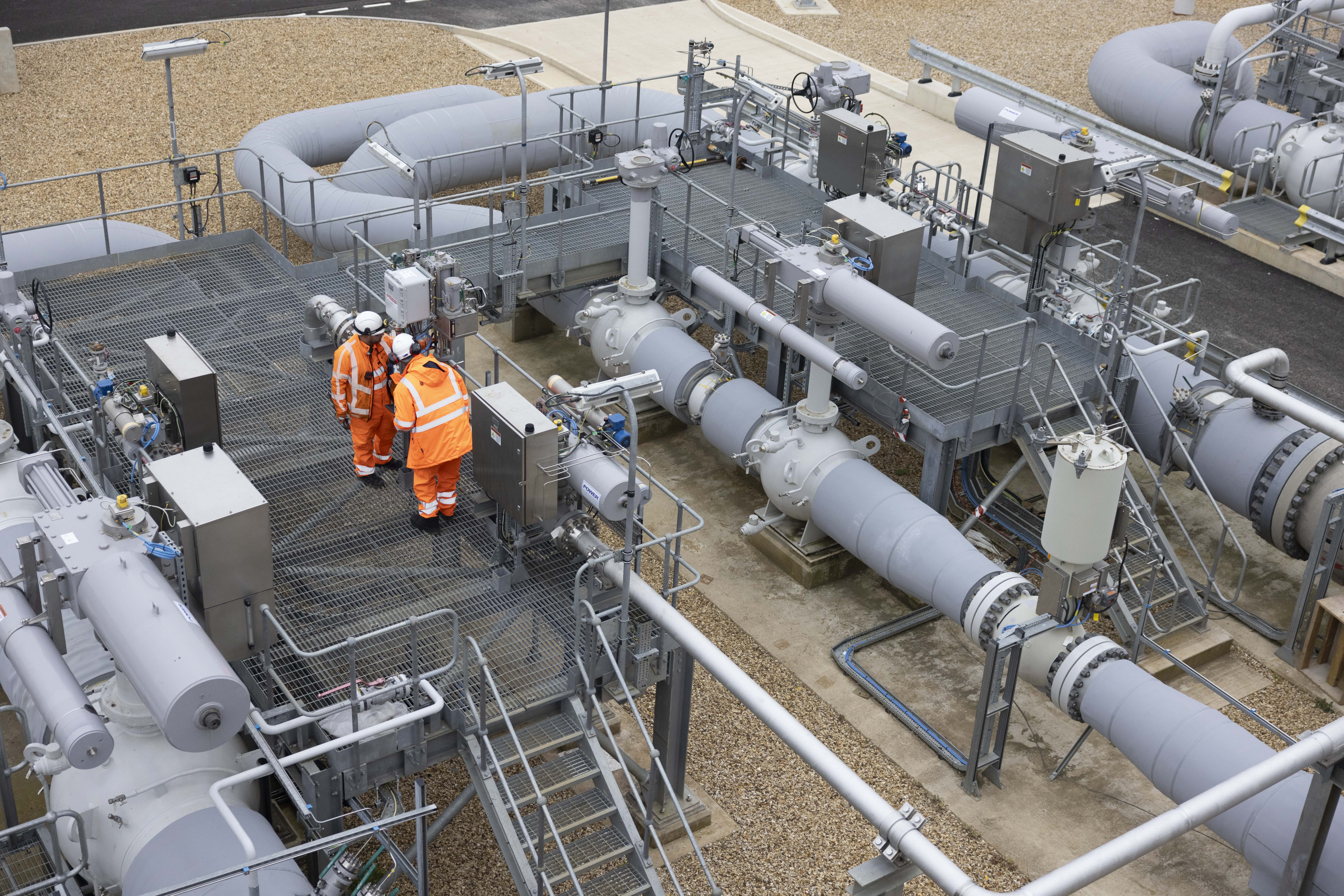SYSTEM OPERATION
On-the-day Commodity Market
The On‐the‐day Commodity Market (OCM) is the balancing market used by National Gas to fulfil our role as residual balancer. Users of the National Transmission System (NTS) are incentivised by the commercial framework to balance their own supply and demand from the network. If this balance is not expected to be achieved on any given day, then we can enter the OCM to buy or sell gas to balance the NTS.
How is the OCM used for residual balancing?
The OCM is operated by the ICE Endex exchange. National Gas buys or sells gas as required to keep end-of-day supply and demand on the NTS in balance. We don’t need to use the OCM to balance the network every day. Historically, for example, we have used it on around 50-70% of gas days. In our role as the residual balancer, the OCM is the only market we use for gas trading (except in emergency situations).
The OCM is open until 2:35am for any gas day. All day‐ahead and within‐day trades are executed anonymously, with market participants able to post bids or offers for quantities of gas. The aggregate price and quantity traded for a specific delivery day is used to formulate a weighted System Average Price (SAP). The SAP and National Gas trade data is then used as the basis to determine imbalance charges for users who do not balance their portfolio.
What trades can be made on the OCM?
There are three types of trade that market participants can make on the OCM:
- Title trade – The majority of trades that take place on the OCM are title trades. These are the transfer of title of gas between market participants. They take place at the National Balancing Point (NBP), which is a virtual trading location for the sale, purchase and exchange of natural gas in the UK.
- Locational trade – This is the transfer of gas between market participants at defined entry or exit points at which gas is bid for/offered. It is designed to change the physical flow rate of gas in a specific part of the network to address localised imbalances.
- Physical trade – Like a locational trade, this is the transfer of gas between market participants at defined entry or exit points and is designed to change the physical flow rate of gas. The key difference between a physical and locational trade is that the bid originator in a physical trade does not define the entry or exit point(s) at the time of placing the bid/offer – instead this is defined post trade acceptance.
Operational guidance: locational trades
This document provides operationally focused guidance material for users: Operational Guidance Material – Locational Trades at IPs. It aims to help users better understand the non-routine commercial tools used by National Gas, so they can be suitably prepared to participate when required.
OCM contingency
If the On-the-day Commodity Market hosted by ICE Endex is unavailable to registered users, or National Gas withdraws its participation, National Gas may invoke contingency procedures for NBP title and locational trades.
Once requested to do so, registered OCM NTS users should submit bids to National Gas using the contingency proforma.
CON_1 OCM Contingency Shipper Proforma
If an OCM contingency event is declared, all market offers received from valid users will be collated and published on this page.

